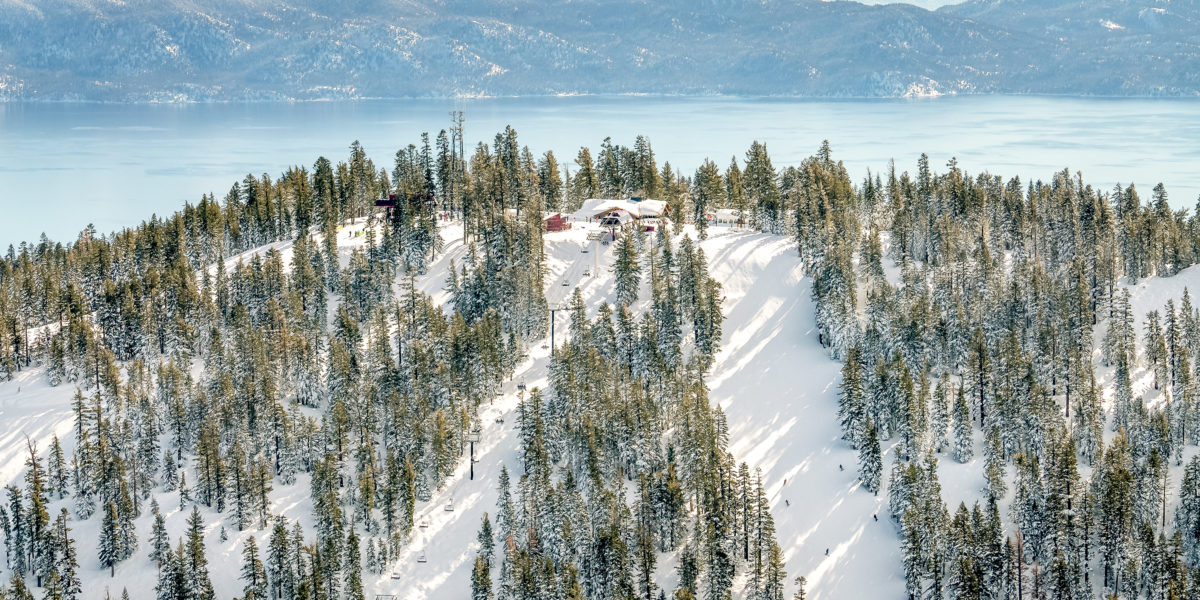
I Ditched Skis for a Snowboard and Lived to Tell the Tale
This is what happens when a longtime skier gets schooled on snowboarding for the first time.

Courtesy of Northstar California
Recently my coworkers dared me get off skis and try something new: snowboarding. I’ve been a skier for years and the thought of trading in two skis and two poles for one snowboard felt intimidating, burdensome, and awkward. Give up swooshing down the mountain and the resulting adrenaline rush for a minefield of falls, black-and-blue marks, and feelings of failure likely to occur on new-to-me apparatus? No thanks!
However, the longer I sat with the idea of snowboarding, the more I was haunted by the feeling of having given up before I even started—and admittedly, part of that was not wanting to let down my coworkers, even if they had only half-jokingly dared me to begin with. As with any new craft, the thought of the initial learning curve was daunting, but the imagined rewards of learning something new felt pretty darn exciting.
And so, with the assistance of a very patient instructor from the Burton Academy at Northstar California resort in Lake Tahoe, CA, I (literally) got on board. After numerous trial and error runs and one bruised bum later, here are my takeaways from my first crack at snowboarding.
Getting Schooled
Snowboarding is one of the most extreme winter sports there is, so attempting to teach yourself will likely lead to a day of unnecessary frustration and physical pain. This is why taking at least one class to learn the basics is so important. You’ll be able to get a feel for the movements in a safe, productive environment and have a lot of fun, too! My instructor, Case, literally and figuratively picked me up when I fell down, held my hand down the bunny slope for the first half of the day, and gave me numerous pep talks. What else could you ask for in a coach?
Gearing Up
Before I even set out on the snow, I had to assemble all the necessary gear and get properly fitted. My coach, Case, chose the Burton Lip-Stick snowboard for me because it is a Flat Top board, which means it is primarily flat underfoot with a rocker bend on the nose and tail. These factors are great for stability, balance, and edge control. Next up were boots, which needed to be carefully selected for the best fit since one ounce of discomfort could make someone want to call it quits after an hour on the powder. Lastly, I tried on the bindings (which connect boot to board). I learned the easiest technique for strapping into the bindings: sitting down facing the bottom of the mountain, bending your knees, and attaching one boot at a time.
Going Through the Motions
Before heading out on the snow, Case had me practice balancing on the board. He taught me to balance my body weight over the center of my foot’s arch with my head and hips centered as well. He also emphasized the need to both look toward and stretch my arms out in the direction I was headed, both of which felt easy while simply balancing on flat ground but would be sure to get tricky maneuvering on the snow!
Case instructed me on proper boarding movements next. Since I’m a visual learner, he offered to demonstrate the movements for me first. Our first task was sliding on the heel edge of the foot, which helps control speed. With heel sliding, the more you lift your toes away from the snow, the more your heel edge will dig in, slow you down, and keep you controlled.
As I watched Case effortlessly float down the bunny slope like a swan gliding on a lake, I thought to myself, That looks so easy! Oh, the naiveté. Before Case even reached the bottom, my impatience got the better of me and I took off, only to make it a few feet before earning my first tumble of the day, a rough but humbling snafu to say the least.
Next, I practiced toe sliding, a movement involving sliding (obvi) while lifting onto your toes and simultaneously putting pressure on your shins against the boots. To gain speed, you push your knees forward towards the snow to dig your toes in more. Toe sliding felt totally unnatural and I was hesitant to lean forward as to avoid another shameful fall on my face. However, after several unsuccessful attempts, I dared to lean into it more. As I did this, I gained momentum and was able to keep my balance. This was a small yet significant victory!
